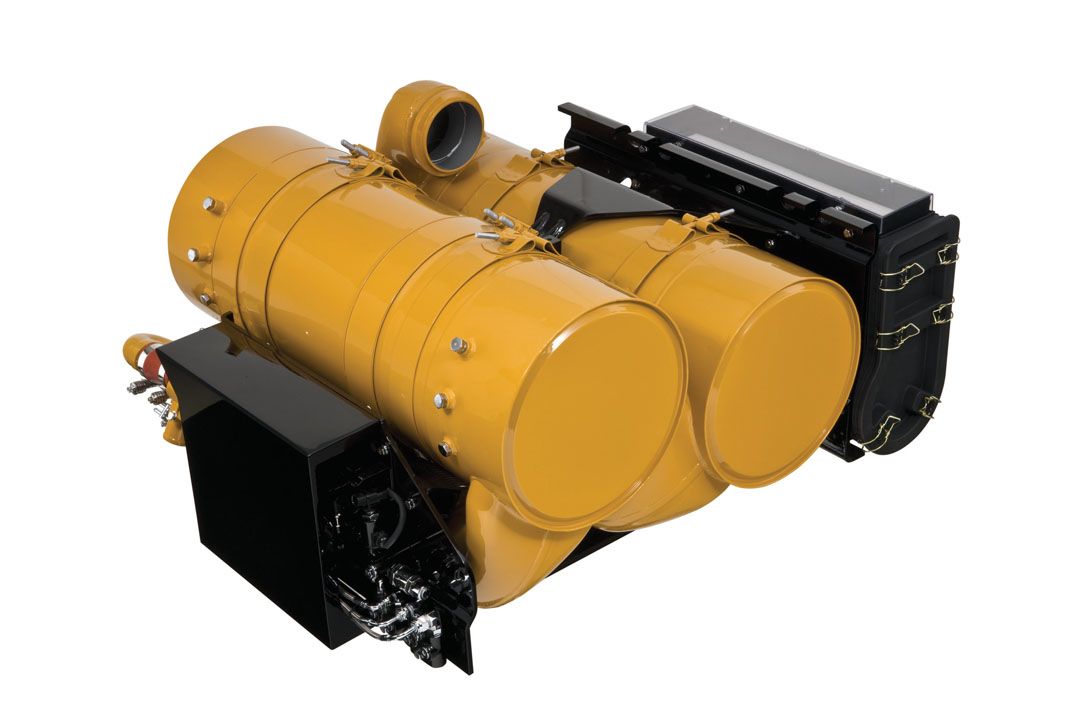

Sign In
Welcome! Sign In to personalize your Cat.com experience
If you already have an existing account with another Cat App, you can use the same account to sign in here
Register Now
One Account. All of Cat.
Your Caterpillar account is the single account you use to log in to select services and applications we offer. Shop for parts and machines online, manage your fleet, go mobile, and more.
Account Information
Site Settings
Security
The Next Regeneration: How Engine Manufacturers are Responding to Tier 4 Final Standards
Gareth Osbourne
Cat® Rental Power
Production Definition Manager
November 2017
INTRODUCTION
Since 1996, the U.S. Environmental Protection Agency (EPA) has phased in a series of “tiered” emission regulations to reduce harmful exhaust gas for diesel-powered equipment in non-road mobile applications. The latest standards require significant emission reductions of particulate matter (PM) and nitrogen oxides (NOx).
The latest regulation, Tier 4 Final, effectively requires an aftertreatment system to reduce emissions to compliance levels for all engines. Rental applications are commonly used in low load situations and there are opposing strategies for combining a diesel particulate filter (DPF) with a sophisticated regeneration process to meet these demands.
Caterpillar uses a proprietary active regeneration technology to maximize reliability and durability of the engine, while the competition adds a costly automatic load bank to the generator set.
THE ROLE OF THE DPF
A DPF is a filtration system designed to reduce PM, including soot from the exhaust of a diesel engine. A series of alternately blocked channels forces the exhaust gas to flow through the channel walls where the particulates are physically captured in the filter.
Many rental generator applications have low load factors or utilize oversized equipment because of limited information on the customer’s load profile. During low load operation, a DPF will accumulate PM due to low exhaust temperatures resulting in increased back pressure on the engine. As backpressure increases, eventually the particulates must be removed from the DPF through a process known as regeneration.
Exhaust temperatures are increased to above 575°F to facilitate regeneration of the DPF. Manufacturers differ on the method of achieving these elevated exhaust temperatures.
THE MYTH OF THE ADDED LOAD BANK
Some manufacturers are electing to install an automatic load bank for generator sets operating with extended low or no-load run time. While the added load bank serves as additional load to heat up the generator set, it also adds unnecessary cost, weight and complexity to the operation.
In addition to the increased capital cost for the load bank, the operating cost immediately increases because the artificial load requires more fuel to be burned to maintain proper performance. For instance, if a machine needs to be operated at 50% load to provide the heat to enable regeneration but the customer connected load is only 10%, the customer is unnecessarily burning additional fuel to maintain the extra 40% load.
Beyond the higher price tag, the supplemental load bank adds weight to each generator set. A heavier unit puts more pressure on the axles, tires and overall trailers, making it more arduous to transport on job sites.
The added load bank also requires more wiring, adding more complexity and opportunity for failures in each unit. Maintenance costs increase since the load bank, wiring, and control system must be inspected and maintained as part of the normal service routine as failure would cause DPF plugging.
Furthermore, the load bank solution adds extra pressure to rental operations. Coordinators must plan which applications need generator sets with supplemental load banks. Financial utilization is then negatively impacted as the rate is typically unchanged whether the machine has the extra expense of being load bank equipped or not.
Despite these significant disadvantages, some generator set manufacturers position the supplementary load banks as a unique solution that adds intelligence for low temperature and/or low load conditions.
CATERPILLAR AND REGENERATION
Caterpillar takes an alternative approach to comply with Tier 4 Final standards by using proprietary active regeneration technology. The Cat® Regeneration System (CRS) periodically introduces a small amount of fuel into the DPF to burn off soot.
By handling the regeneration processes internally with intelligent measurement of DPF soot level and on package thermal management, the high-speed system works without any interaction from the operator. This allows all Cat XQ rental generator sets fitted with DPF systems the flexibility to be used in any application and any environment.
The CRS is a safe, computer controlled system utilizing a closed combustion chamber similar to gas-burning home furnaces. Regeneration will only take place when the system determines the soot in the DPF has reached a level where regeneration is required. Then a small amount of diesel fuel is combusted upstream of the DPF, increasing the exhaust temperature to the point where the soot in the DPF will oxidize and be burned off.
Ideal for low load and cold climate environments, the CRS provides precise measurement and control: reducing fuel burned during regeneration. The CRS reduces overall fuel consumption with a simple, low cost and low maintenance solution.
In addition to being featured on all Tier 4 rental products 130bKW and above for North America, the CRS is also included on select industrial engines and construction equipment.
To locate the Cat dealer nearest you, visit: http://www.cat.com/en_US/support/dealer-locator.html.

ABOUT CATERPILLAR
For more than 90 years, Caterpillar Inc. has been making sustainable progress possible and driving positive change on every continent. Customers turn to Caterpillar to help them develop infrastructure, energy and natural resource assets. With 2016 sales and revenues of $38.537 billion, Caterpillar is the world’s leading manufacturer of construction and mining equipment, diesel and natural gas engines, industrial gas turbines and diesel-electric locomotives. The company principally operates through its three product segments – Construction Industries, Resource Industries and Energy & Transportation – and also provides financing and related services through its Financial Products segment. For more information, visit caterpillar.com. To connect with us on social media, visit caterpillar.com/social-media.
Online Community: catelectricpowerinfo.com/connect
Facebook: facebook.com/Caterpillar.Electric.Power
YouTube: youtube.com/CatPowerGeneration
